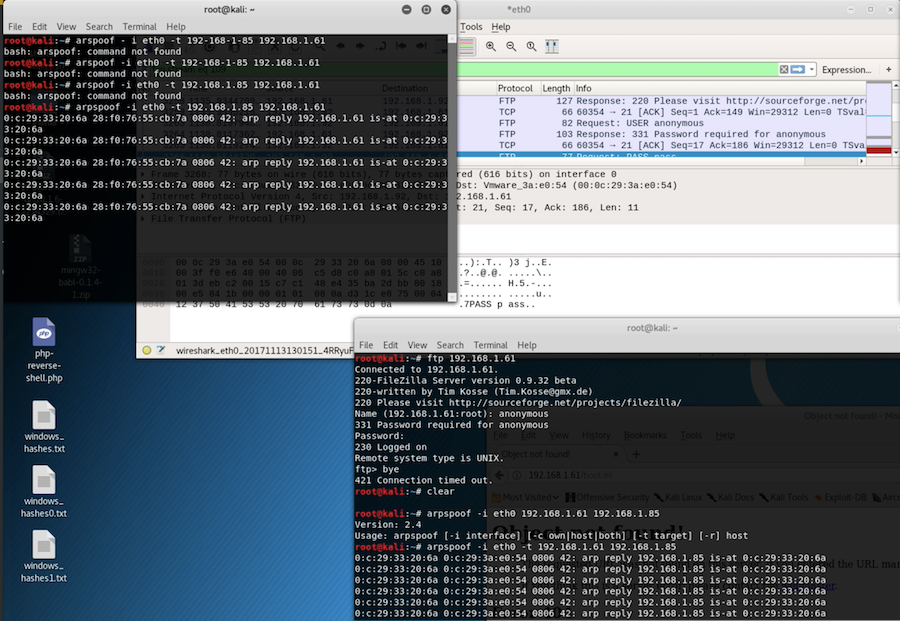Arpspoof Download Ubuntu For Mac
Download mozilla firefox 6.0.2 3.6.22 for mac. Hi, so im using Ubuntu 16.04.5 LTS version os, in which im trying to practice arpspoof. My host router ip is 192.168.0.1 and my victim ip is 10.0.2.15. By now, you have a working Live USB flash drive that contains the Ubuntu installer, your Mac configured with a partition ready to be used for installing Ubuntu, and an itchy mouse finger just waiting to click on the Install Ubuntu icon you see on the Live Ubuntu desktop. Provided by: dsniff_2.4b1+debian-21.1_amd64 NAME arpspoof - intercept packets on a switched LAN SYNOPSIS arpspoof [-i interface] [-t target] host DESCRIPTION arpspoof redirects packets from a target host (or all hosts) on the LAN intended for another host on the LAN by forging ARP replies. This is an extremely effective way of.

By • 6:00 am, January 7, 2016 • • Ubuntu running on my Macbook Pro -- beautiful. Photo: Rob LeFebvre/Cult of Mac Have you ever wanted to try out a different operating system on your Mac? Ever since Apple started using Intel chips in their computers, it’s been super simple to run Windows and even popular Linux distributions via Boot Camp, virtual environments like Parallels and VMWare Fusion, and the like. The problem is that you need to use up precious system resources to run these things on your Mac. Even virtual machines take up disk space, as does running Boot Camp and partitioning your main Hard drive. What if you just want to test something out on your Mac before fully committing? Turns out it’s fairly easy to run Linux on your Mac without using up any bit of your hard drive.
Arpspoof Windows
Using a flash drive and some Terminal commands, you can check out a distribution like Ubuntu running right on your Mac without having to sacrifice a thing. Prep your flash drive Format the drive in Disk Utility. Photo: Rob LeFebvre/Cult of Mac The first thing you need to do is to find a spare flash drive of at least 2 Gb. I used a 4 Gb one, and you can probably use as large a drive as you want. Plug the flash drive into your Mac and then launch Disk Utility. Once in there, click on the flash drive in the pane to the left, and then click on the Erase button at the top. If you’re using a utility like, you’ll want to quit it before you start the Erase.
Let OS X do its thing and remount your flash drive. Now launch Terminal. Get Ubuntu Make sure you grab the 64-bit version. Photo: Rob LeFebvre/Cult of Mac Now you’ll want to download Linux. I’ve chosen Ubuntu since it’s my favorite Linux distribution, so these instructions will assume you are using the same. If not, be sure to see how the distro you choose will work on a flash drive. Head over to and download the 64-bit version of the latest stable version (Ubuntu 14.04.3 LTS as of now).

You can totally try the cutting-edge version (15.10 as of this post), but can’t count on it to be as stale as possible. Use it at your own (very minor) risk. You’ll be asked to donate to Ubuntu–feel free to do so; the team is pretty great–but you can also just click the “Not now, take me to the download” button and the.iso file will come to your Mac. Now it’s time to drop into Terminal. Change file formats From.iso to.img.dmg. Photo: Rob LeFebvre/Cult of Mac First off, you want to change the.iso file to a more Mac-friendly.img format. Launch Terminal and type or paste the following command in.
Hdiutil convert -format UDRW -o ~/path/to/target.img ~/path/to/ubuntu.iso The ~/path/to/target.img ~/path/to/ubuntu.iso part will need to be your own path to the file you just downloaded. For example, I downloaded it to my Downloads folder, so my path is ~/Downloads/ubuntu-14.04.3-desktop-amd64.iso. Download driver canon l11121e for mac. The command I used, then, is: hdiutil convert -format UDRW -o ~/Downloads/ubuntu-14.04.3-desktop-amd64.img ~/Downloads/ubuntu-14.04.3-desktop-amd64.iso OS X may add the file extension.dmg to the file you’re creating, so you could end up with ubuntu-14.04-desktop-i386.img.dmg. Don’t worry about it, either way. If successful, Terminal will print some dots across the window and you’ll get a result message similar to the above. Find your device node Make sure you note the correct flash drive. Photo: Rob LeFebvre/Cult of Mac You’ll want to make note of what OS X calls the flash drive you’re using.